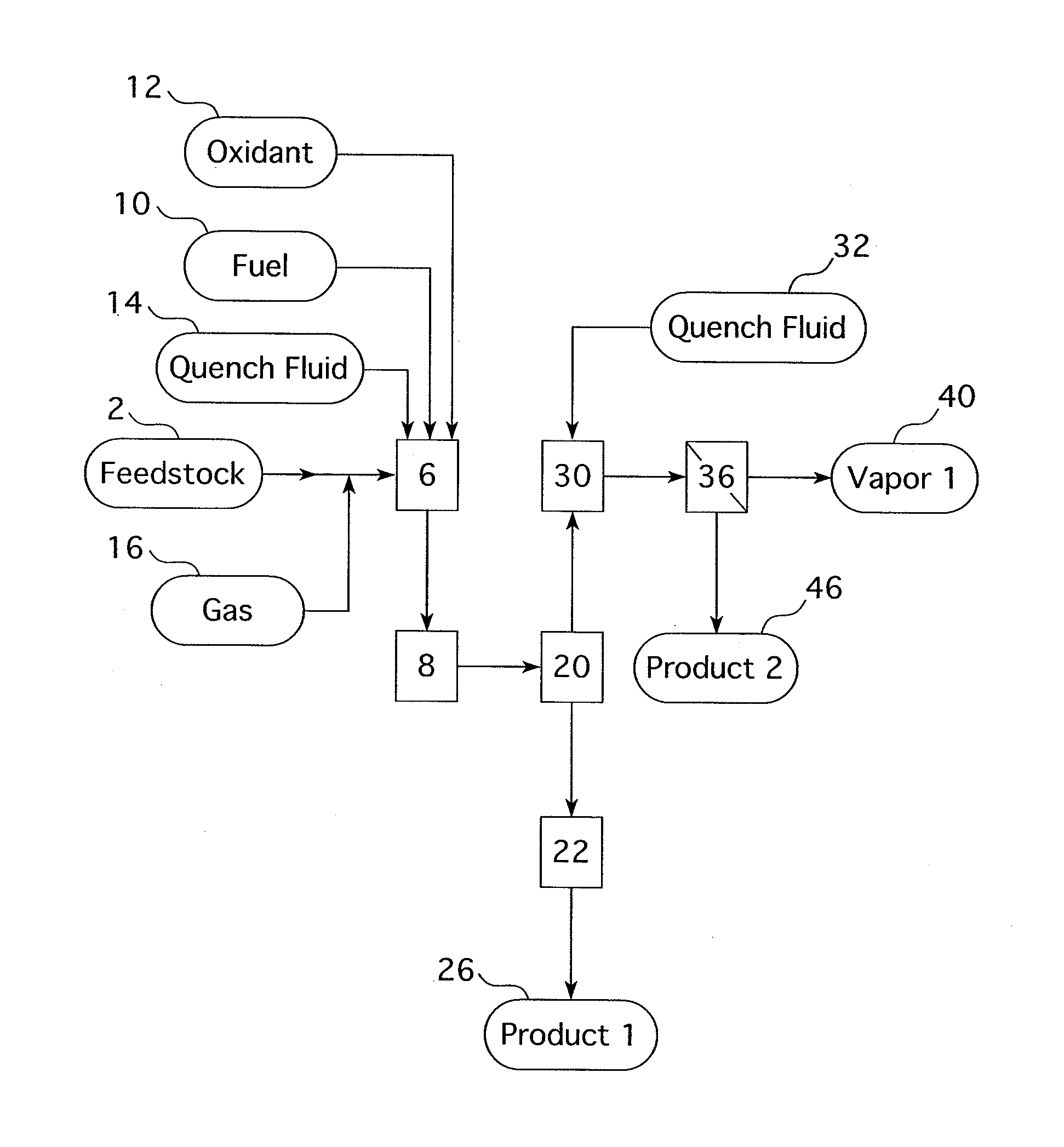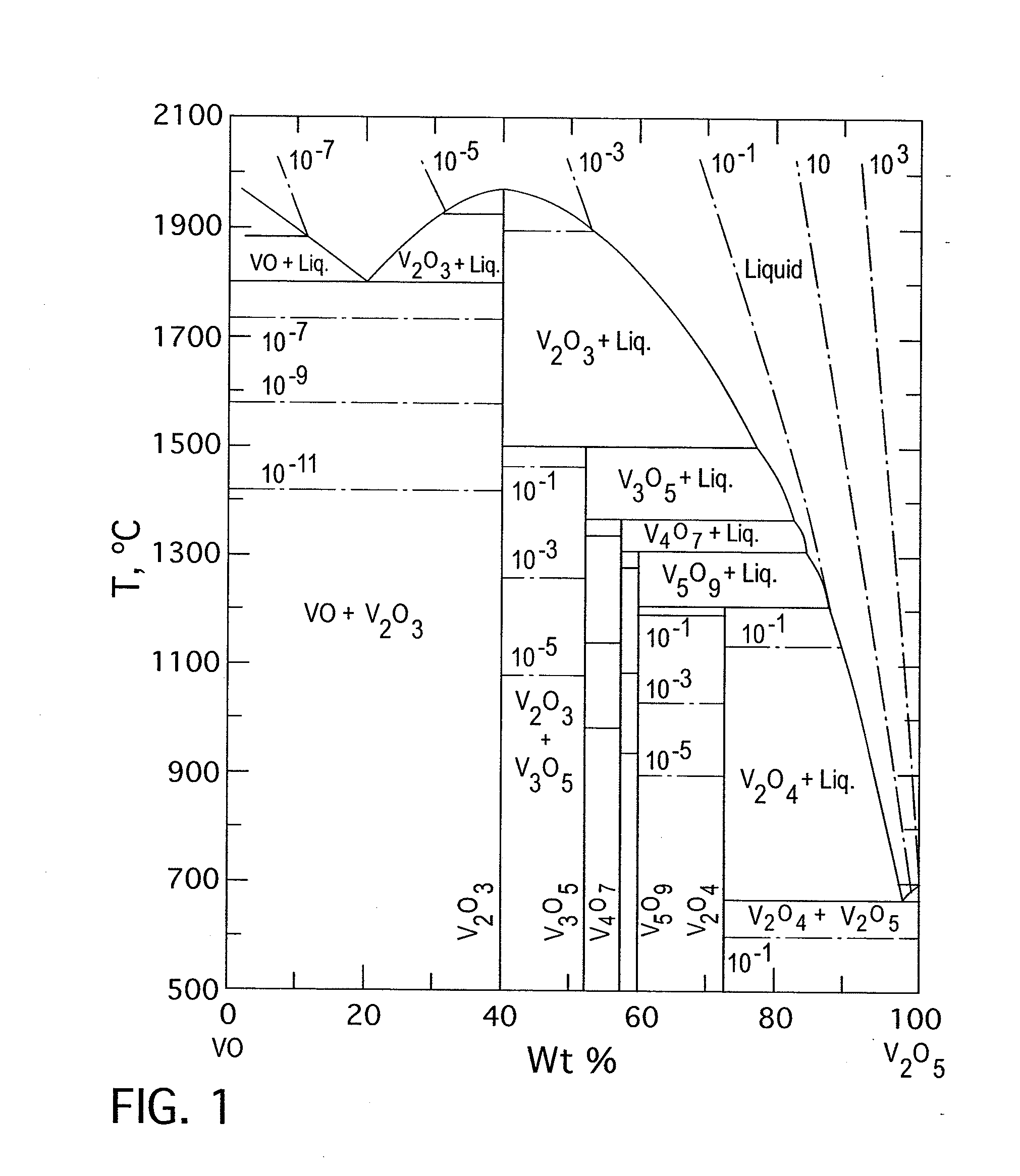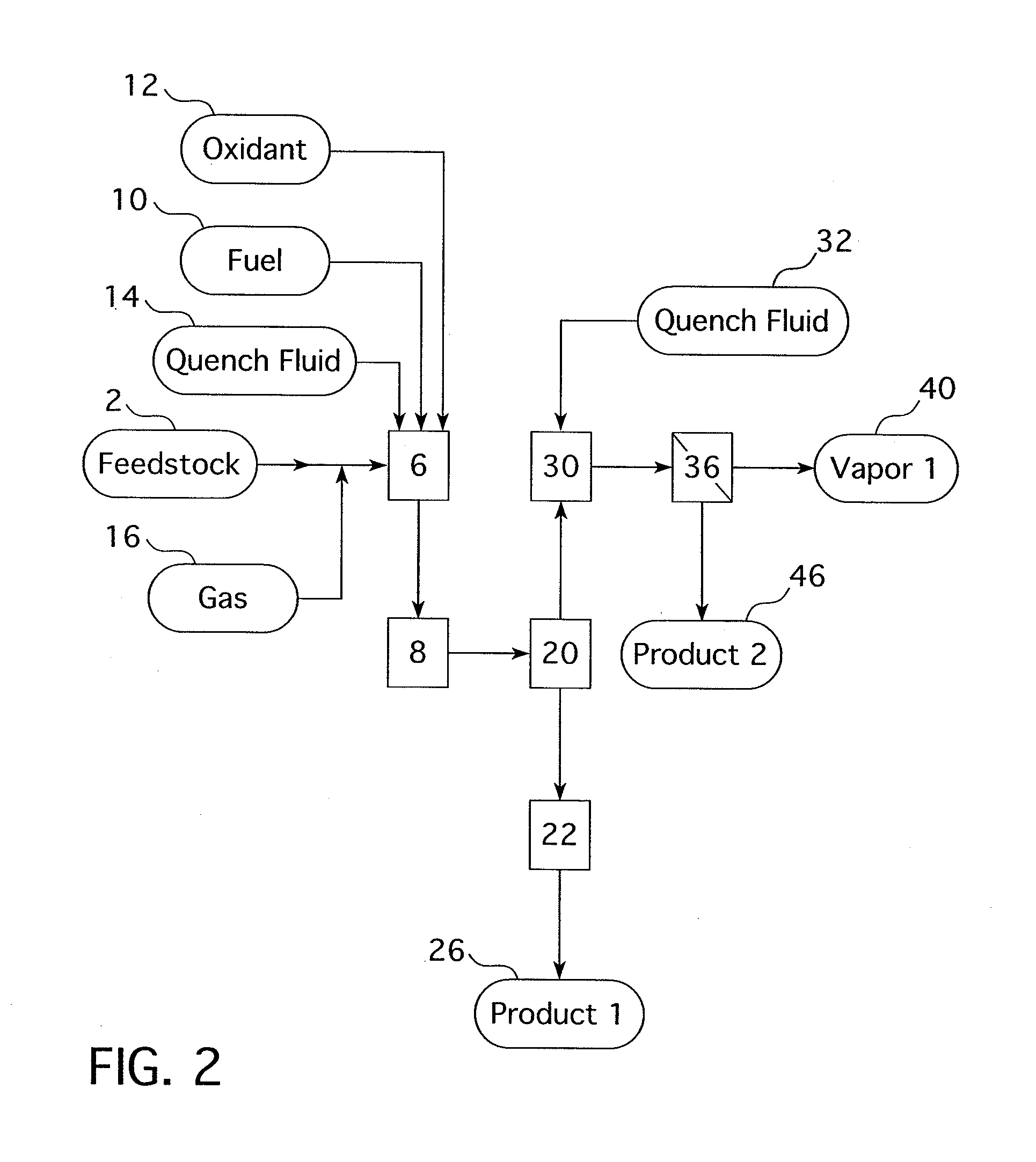Methods for the concentration of vanadium from carbonaceous feedstock materials
a technology of carbonaceous feedstock and vanadium, which is applied in the direction of vanadium compounds, niobium compounds, chemistry apparatus and processes, etc., can solve the problem of inability to achieve cost effective heat recovery, and achieve the effect of efficient and effective heat recovery in boilers
- Summary
- Abstract
- Description
- Claims
- Application Information
AI Technical Summary
Benefits of technology
Problems solved by technology
Method used
Image
Examples
examples
[0042]A number of pilot-scale trials were conducted with a vanadium containing feedstock to verify process performance. The pilot trials were performed with a system configuration and apparatus that included a loss-in-weight screw feeder for delivery of the feedstock, a combustion air delivery system, an oxygen delivery system, an entrained-flow reactor assembly consisting of a counter-rotating vortex reactor and a cyclone reactor, a high-temperature cyclone separator, a gas quench assembly, a low-temperature baghouse, and an acid gas scrubber. Provisions were present in the pilot-scale system for the collection of the a stream analogous to Product 1 (FIG. 1) (a vanadium-rich granular product) discharged from the high-temperature cyclone separator, as well as a stream somewhat analogous to Product 2 (a vanadium-rich powder product) from the low-temperature baghouse.
PUM
| Property | Measurement | Unit |
|---|---|---|
| Size distribution | aaaaa | aaaaa |
| Temperature | aaaaa | aaaaa |
| Temperature | aaaaa | aaaaa |
Abstract
Description
Claims
Application Information
 Login to View More
Login to View More - R&D
- Intellectual Property
- Life Sciences
- Materials
- Tech Scout
- Unparalleled Data Quality
- Higher Quality Content
- 60% Fewer Hallucinations
Browse by: Latest US Patents, China's latest patents, Technical Efficacy Thesaurus, Application Domain, Technology Topic, Popular Technical Reports.
© 2025 PatSnap. All rights reserved.Legal|Privacy policy|Modern Slavery Act Transparency Statement|Sitemap|About US| Contact US: help@patsnap.com



